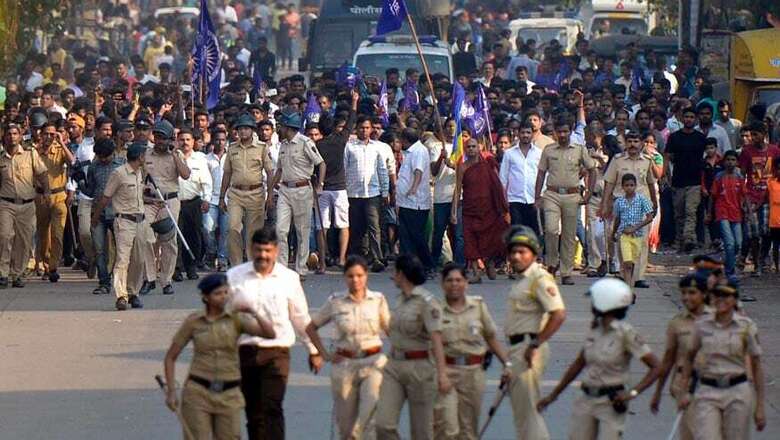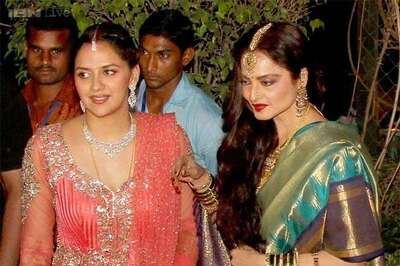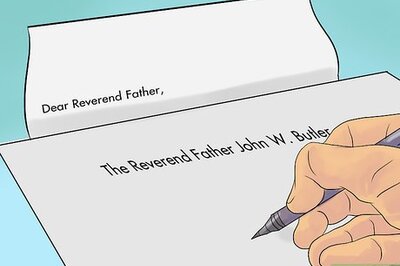
views
Over 90 years ago, on a cold winter morning, Dr Ambedkar visited the Vijay-Stambha (A Pillar of Victory) at Bhima-Koregaon, a war monument on the banks of the river Bhima near Pune in Maharashtra. The date was January 1, 1927. Dr Ambedkar took to the stage and spoke to the people assembled there. He told them about the need to remember and commemorate the battle that was fought not with the intention to conquer territory but to win the basic human dignity. He spoke of the need to remember Koregaon as long as there is an inkling of oppression.
In 2018, Ambedkar’s spirits still guide India to make a nation based on equality and destroying discrimination in every form.
This year marked the 200th anniversary of the battle; imputing cultural and political assertion as lakhs of people visited the war monument, revitalising the dignity by destroying the inequality that was perpetuated by Peshawa Brahmins. It brought together more than one million people from across the country. There were people from Telangana, Andhra Pradesh, Rajasthan, Uttar Pradesh, Bihar, and other parts of the country. The monument was beautifully decorated with garlands. The well-decorated pillar somewhat gave the delusion that it is rising from the sky.
It symbolised the dignity for all forms of oppression and became a landmark of socio-cultural revolution throughout India. There was victory over inequality.
There were minimal arrangements made by the state government in terms security, or to control the traffic. There weren’t even proper parking arrangements made.
It was a sunny day and none of the government machinery or NGOs thought it was necessary to make drinking arrangements. The local shopkeepers reportedly were even reluctant to provide water to the pilgrims.
It was a long walk for the floods of men, women and children who had gathered there. You could tell they were full of pride and dignity. Each one of them — irrespective of caste or region or gender —were marching towards the war monument in a peaceful manner.
The Bhima Koregaon Battle
It is important to note that the battle of Bhima-Koregaon is historic in many aspects. On January 1, 1818, the disciplined and organised army of 500 so-called untouchables (Mahars by caste) defeated the 28,000 well-equipped army of the Peshwa-Brahmins. The Mahars (now renounced Hinduism and converted to Buddhism), some other marginalised castes along with the British officers defeated what can be considered as the inhuman draconian casteist rule of the Peshwas. The army of Peshwa was well trained with a large force of 20,000 horses and 8,000 infantry of Peshwa Baji Rao II. A small force of 500 tired men fought without rest and respite. The names of the 21 Mahars who died in the battle were etched on the war monument.
The memory of battle today became a matter of pride for Bahujans. It is because the Peshwa-Brahmin rulers imposed the worst possible conditions on the lower castes and especially on the so-called untouchables. Rulers literally enacted the caste codes of Manu Smriti; as a result the Mahar-Nagas were forced to wear earthen pot around their neck to spit because—as they were told — the earth must not get polluted. They tied a broom on their waist so that their footprints are swept away, preventing pollution.
Their touch and even sight was considered so polluting by the Brahmins that they had come out on the streets after midnight when the shadow is small — even their shadow was considered polluting by the Brahmins. They were only allowed to come in the village post-midnight to carry out their job of skinning dead animals. They had to carry a bangle stick to alert any other non-untouchables to prevent them from pollution even by sight.
In case of any violation of these rules prescribed by Manu Smriti, the punishments were extremely severe that only a psychologically sick mind can imagine. Boiling lead must be poured in the ears of untouchable if s/he hear the words of Vedas, the buttocks must be chopped out if s/he sits before the Brahmins, eyes must be taken out if he looks into the eyes of the Brahmin, and many more similar imagined cruel violence was prescribed by Manu Smriti. They were in practise.
In the history of the world, there are many battles and revolutions fought for the liberation from the slavery. The Haitian Revolution that started in 1791 by the African slaves resulted in complete takeover of Haiti by the year 1804. The fight of the African Americans through the military and the rebellion of Nat Turner are some of the landmark events in the history of the world when the oppressed classes took up arms.
Bhima-Koregaon battle narrates an uncommon story because the worst kind of oppressors were defeated by a small troop of army. The origin of Mahars is discussed by Dr Ambedkar in the short paper on "Who were the Mahars?" and historically he tried to show that Mahars were the martial race. They were a brave class who fought tirelessly with bravery to defeat the Brahmins. Not only the Mahars, but the major ‘untouchable’ castes were martial races. The Mahars’ martial valour and military achievement goes back to their presence and leadership in the armies of Chhatrapati Shivaji Maharaj, one of the greatest kings of Maharashtra.
That was the time India was divided into many small kingdoms ruled by different maharajas. Though there were many kingdoms, the Manu Smriti reduced the erstwhile martial classes of untouchables (and former Buddhists) to the lowest rung.
Dr Ambedkar found the origin of the word Mahars — it came to usage in 1700 AD. Gustav Oppert, a remarkable German Indologist, in his book "The Original Inhabitants of India" showed that the untouchable castes throughout India have a common social origin. They got different names over the period of time. If we trace their history, it goes back to the time of conflict between Buddhism and Brahminism. One can strongly argue that untouchability is the outcome of the Brahminical hatred towards the Naga Buddhists — and it still continues.
The men who fought the Bhima-Koregaon battle were treated less than humans by the Brahminical Peshwas. The revenge was brutal. Few battles in modern Indian history witnessed more or less the same story of Brahaminical oppression. Even in the Battle of Plassey and Buxar in Bengal, the untouchables of the regions fought side by side with the British army. The victory of untouchables in every war cannot just be a matter of their war skills but what drove and fuelled them was the idea of wanting to eradicate the age-old caste oppression. They fought with whatever means they found —to eradicate internal slavery which continued even after British Rule.
Though India was ruled politically under the British and the ‘untouchables’ fought with the hope of their rights and their liberation with the existing power, the British were ungrateful. There were dominant castes in the British military. A major figure that emerged among them was Mangal Pande who became a part of our history books as the hero of 1857 mutiny.
Before 1857, Mahars were the vital part of army and British believed that one of the reasons for the unrest was the inclusion of lower castes in the army. The Vellore mutiny of 1801 and the 1857 mutiny have been documented as caste conflict. The British delisted the untouchables. After the 1857 mutiny, and upon the recommendations of the Peel Commission, the British placed a ban on the recruitment of ‘untouchables’ in the army.
Dr Ambedkar argued that the Bombay army of Mahar and Madras army of pariahs helped the British quell the 1857 mutiny, and that “nothing can be more ungrateful than this exclusion of the untouchables from the army.” They only started listing them when they realised that ‘untouchables’ have risen politically through the social mobilisation.
Dr Ambedkar played a role in starting the Mahar regiment again and similar to that of Mazhabi Sikhs in the 1940s. A separate Chamar regiment was established in 1943. Dr. Ambedkar’s campaign in the 1930s ensured political rights for untouchables. His campaign and confidence emanated from the great lineage and pride of untouchable valour, fearlessness, and sacrifice.
200 Years Later…
In spite of celebrating 200 years of the historical battle, the arrangements made by the state administration were remarkably poor. If you were visiting Bhima-Koregaon by Ahmednagar Road, you had to park your vehicle 5 km before the spot where the monument devoted to the soldiers is erected. Before one reaches the actual place of the pillar, 100 meters of a distance would take you 50 minutes to walk. In total, one had to walk 5 km to reach the monument. It was a laborious exercise. Men and women with their children had to walk for 10 km in total. The mass of people at the Bhima-Koregaon must be into lakhs and the people were floating in and out every moment.
If this toil was not enough, the caste Hindus instigated by right-wing forces pelted stones at the innocent people by raising saffron flags, coming from the other side of monument – the road that approached the monument from the side of Ahmednagar. They set vehicles on fire and created an atmosphere of fear among the people. There was an atmosphere of fear and violence. The crowd remained undeterred and non-violent. The attack seemed to have been planned. Only after this fearsome violence instigated by the Brahminical Hindutva forces, the Dalits took to the streets to protest.
The Violence And Its Effects
The violence perpetrated during the celebration of Bhima-Koregaon by the Hindutva forces must be understood and should be contextualised in the larger contemporary political and cultural scene of the contemporary India. Hindu caste culture did not deliver anything dignified to the majority of so called Shudras and ‘untouchables’ of the country.
It would be a mistaken judgement that Mahars fought for the British against their own nation. It was not a battle between one army against the other, but rather a battle of oppressor against oppressed. The battle is the result of Internal Colonisation though external colonisers instigated the battle for their selfish empire.
The British cleverly and shrewdly used the divide for the establishment of their own Raj. That was the history and British were gone, but the battle between oppressor and oppressed still continues in many new forms. Majority of the citizens (shudras and untouchables) are still oppressed by the Hindu privileged castes, though the forms have taken new colours. Khairlanji atrocity, Rohit Vemula’s death, Una atrocity, and number of likewise events throughout the country are still fresh in the memories of the Indian mind.
The nation cannot be imagined or visualised by ignoring the internal slavery that still perpetuates in the country. Dr Ambedkar learned the complexity of caste right from the beginning and sharply criticised not only British in pre-Independence period but post-Independence Indian governments dominated by upper castes. He tirelessly fought with oppressive authorities in post-Independent India. He states in The Times of India, March 21, 1940: “It is suicidal to imagine that political independence necessarily means all real sided freedom. Not to make a distinction between the freedom of the country and the freedom of the people in the country is to allow oneself to be misled, if not deceived.”
If a nation has to exist harmoniously, it needs to be equally represented by all sections of the society. And, that is possible only when its citizens are economically, socially, and religiously free. The battle of Bhima-Koregaon was decisive for the future evolution of the Bahujan movement for social justice. If it had not been for the battle of Bhima-Koregaon, the oppressed Indians would have languished in the perpetual social degradation.
When the Marathas were ruling significant part of India after the social, political, cultural revolution of Shivaji Maharaj, the society was not so widely divided on the basis of caste. The great Maharaja never discriminated on the basis of caste and religion. On the contrary, the arrogant Brahmins disrespected the Maharaja as is evident from so many historical sources as the Shudra king.
However, through the political machinations, the Brahmins took over the Pune kingdom and they ruled on the basis of Manu Smriti. Sambhaji, the son of Shivaji, was killed according to diction of Manu as he dared to study Sanskrit language. The idea that Shudras cannot read, write, or hear Sanskrit texts was the pretext on which he was killed.
When Sambhaji Maharaja was thus killed, it was a Govinda Mahar—a soldier in Vadu—who collected Sambhaji's mortal remains. That is the reason why the Brahminical forces vandalised the tomb of Govind Gaikwad on December 28, 2017, who buried the remains of Sambhaji.
The battle of Bhima-Koregaon is the crucial context for the social and political emancipation of the Shudras and ‘untouchables’. Hindu Shastras and Smritis placed the consciousness of Shudras and ‘untouchables’ under eternal oppressive state. The history of oppression would never have made them a free soul as it is deeply sanctified by divinity. The battle of Bhima-Koregaon changes the nature of prolonged historical oppression and shifts the defeated consciousness to the dignified consciousness that gives confidence to generations to come. This cognitive shift in the historical trajectory should be understood in this context.
The present context is important as the untouchables of the past all over India are asserting and the symbol of their assertion is the Bhima-Koregaon battle as the decisive point in their history of liberation. The history of Bhima-Koregaon gives them confidence that they can easily come out of the manufactured inferiority imposed on them by the Brahminical socio-religious system. That caste is the root of all problems was expressed by the Bhima-Koregaon battle.
Today, the fight to safeguard democracy in India through peaceful means. Dr Ambedkar guided the nation to progress through peaceful means to promote liberty, equality, and fraternity in a society that is divided by caste, gender, and religion.
In our times, the forces of Peshwas have taken the mask of pseudo-democratic and rigid religious position that creates the vertical society based on the caste and religion. On the other hand, the descendants of Sidnag (the leader of the Mahars in the battle) are mobilising against the evils that still prevail in the Indian society. The battle today therefore is not for erecting violence, but it represents justice and equality through peaceful and non-violent means. It is now influenced by the spirit of Dr Ambedkar where he evokes the non-violent ethos.
(The author is a Dalit scholar who teaches at the English and Foreign Languages University, Hyderabad. Views and personal.)
(#BeingADalit is a series on what it takes to be a persecuted minority in India. In an attempt to go beyond the numbers, News18 also mapped incidents of Dalit atrocities over the last one year across India.)

















Comments
0 comment